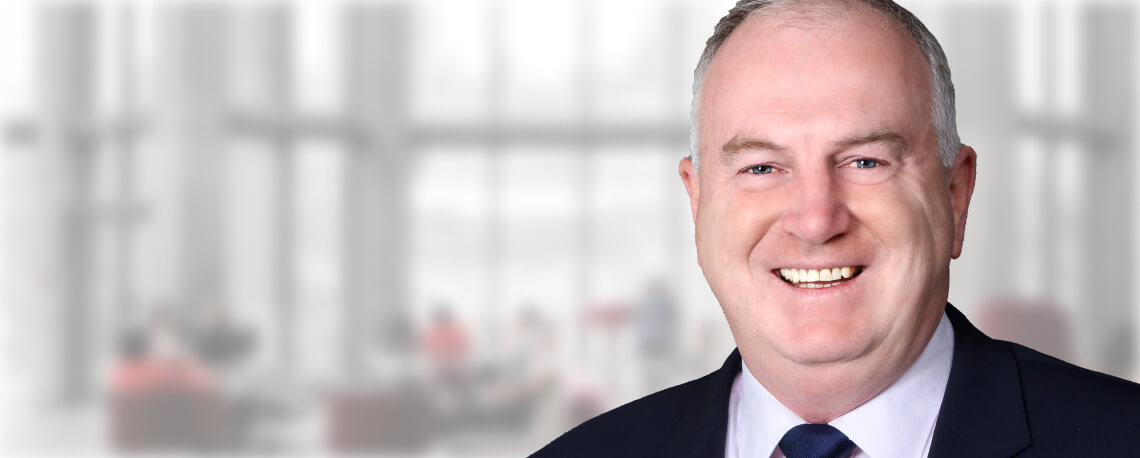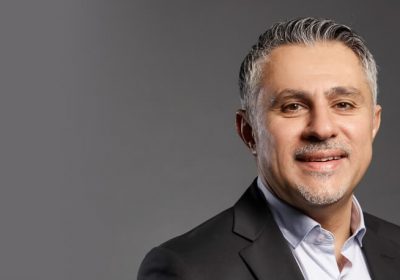
- Author: Alexandra Cain
- Posted: July 20, 2020
GHD Global CFO: success is a mindset
By Alexandra Cain
Phillip Bradley’s title is telling. He’s the Executive General Manager – Finance/Group CFO for engineering professional services firm GHD and he sees himself as an executive first and CFO second. It’s a position that helps support the business’s success,
“As a young CFO I wanted to prove myself by being the smartest person in the room and I thought knowledge and data was the most critical thing. I now realise what’s more important is how you enable others. Our people are in the top one per cent to two per cent of university entrants, they’re very smart at solving problems. You can’t add as much value when you concentrate on what they are focussing on. You have to look for the gaps they’re not addressing or thinking about.”
“This has become how I operate. I think about companies in other industries and how they deal with issues that we face. I’m not trying to lead areas like strategy, innovation, IT, clients or risk, but I do think a lot about these areas as they are so pivotal to our future. My efforts are in building on that thinking and guiding focus and investment to the areas where it will have the biggest impact.”
He says this perspective has completely changed his role.
“You need really strong finance people around you to be able to do this; they enable me to be an executive first and CFO second.”
CFO Magazine was fortunate to secure an exclusive audience with Bradley during our recent William Buck CFO Live Webcast.
GHD has around 10,000 staff in 200 offices. Coincidently, he previously worked at event sponsor William Buck during the 1990s “recession we had to have”. In fact, Bradley has been at the helm of teams at various companies across six major recessions over his career, which puts him in an unparalleled position to deliver insights into today’s world.
He has been at GHD, a 90-year-old consulting engineering, architecture and consulting firm, since 2009 – also a recession (the GFC) – when it had 5,000 staff and was dominated by Australia. Although 45 per cent of its revenue still comes from Australia, where it’s often referred to as the number one brand in engineering, about the same proportion of its revenue is now derived from its North American operations. It also has operations in Chile, the Middle East, New Zealand, the Philippines and the UK and is the 26th largest engineering firm globally.
Impressively, GHD is employee-owned and about a quarter of the global workforce are shareholders. “It’s a different dynamic when employees own the company. Shareholder feedback comes from a walk through any office. They are driven by sustaining long term success and protecting the legacy, which is very different to a public company or private equity or even a narrowly-owned private company; the model is part of our strength,” says Bradley.
GHD has diversified its services along the value chain of the major transport, water and other infrastructure projects in which it’s involved. It designs infrastructure working with contractors or governments and can be responsible for everything from community engagement to project planning, and also provides advice about how to maximise the benefits to communities. This is all occurring at a time when often physical assets are moving to digital and clients are calling for broader technical solutions and a deeper understanding of how value can be realised.
The New Normal
Agile working is nothing new for GHD. But the lightening-speed transition to remote working is testing it. The GHD executive team was already dispersed, with the 10-strong global leadership team located across Australia, Canada, New Zealand, the UK and US.
“Like many organisations, using technology such as video conferencing is now an intuitive and everyday event. But until the pandemic we were still going into offices. We do large, 3D modelling for major infrastructure projects so we use heavy-duty software. Previously, we didn’t think some of our teams could work remotely because of technology constraints,” Bradley explains.
This mindset was quite wrong. At the start of the pandemic 1,000 people were collaborating on Microsoft teams, and within four days in mid-March the IT group had rolled out the system to all 10,000 staff globally. Bradley describes the challenge of transitioning the team in just one city, Manila, where 600 people work in both local and global shared services, some across 24/7 shifts.
“Our IT team got hold of 110 laptops in a situation in which the city was entering military lockdown and raced to set up the team on our information, financial and engineering services systems. The commitment to keep delivering service was amazing. We even had one staff member motorbike across to his friends uncle’s garage because that’s where he could get stronger bandwidth to meet a client’s need,” says Bradley.
“The start of the Covid period was an amazing learning experience and watching people do what they thought they couldn’t was highly rewarding. Always believe in the power of people to change. What’s possible is far greater than what we thought and that learning will transfer to many things if we allow it”
he adds noting that all this happened even though the engineering sector has a fairly conservative culture, rolling out a system with little training and minimum risk management – the opposite of its usual way of operating. “It’s an amazing story of agility.”
An Evolving View of Leadership
Bradley says during a crisis such as a pandemic there’s a heightened need for a strong relationship between the CFO and CEO because people look for strong and aligned leadership with a clear strategy that ensures the business is safe but also considers them.
“I grew up as a country boy and I believe being frank is an easier way to operate and my CEO is similar; we share our stresses at times.”
Interestingly, Bradley also places equal importance on staff welfare and business issues. “When we started to have conversations about sustaining the organisation, we looked at where this COVID situation could go and carry out scenario modelling. But Covid-19 was not a single impact; it was affecting regions differently everywhere so we needed a model that could be flexible at a local level and still give people confidence. We backed sustaining our people as our priority, with flexibility in hours the main way to align costs to revenue. We committed to no major redundancies or salary cuts. Some thought it’s not possible to handle a downturn like that.”
Bradley says getting the buy-in of around 50 management teams globally was instrumental. “Everything needed to be nuanced at a local level. If we didn’t have enough work in a market, our people would take leave and we let people go into negative leave, but we also led from the top with everyone in the management ranks voluntarily booking leave to share the load. Everyone committed to one approach and the results so far have been excellent. Revenue is down as some projects have been stalled, but profits are better than anticipated and cash flow has been excellent and the level of employee feedback and support has been overwhelmingly positive.”
Achieving the Impossible
Working capital management has been a huge area of focus through the pandemic.
“We changed the mindset of the whole organisation to working capital in two weeks. We’d been through a strong trading period pre COVID but working capital had blown out by five per cent, so we set as a priority to get this back down and the results have been exceptional, we are down 20%” says Bradley.
The team achieved a stellar turnaround by rapidly changing processes and emphasising client communication.
“When we announced our plan, we initially hit a wall of, ‘you can’t be serious – it’s not possible – no-one in the industry has done this.”
But what we achieved has been well beyond our expectations and the financial implications are significant, including enabling us to better look after our suppliers at this extremely important time.”
The key was teaching the business to bill quickly and better understand contract terms. “We have clear terms for every project and yet many organisations take two to three times longer to pay than they sign up for. We have 20,000 jobs going every year and the volume can make it seem like a mountain to change processes. However, every mountain can be climbed if the mindset is strong and processes are effective. For us, the key was changing the collective belief across our entire business about what was possible. I think the power to shape mindset is underestimated in many businesses.”
As for the future, Bradley says COVID is far from over and many risks remain. These include escalating tensions with China and the risk to economies from mass redundancies and insolvencies. He acknowledges there is no place for complacency. Despite the difficult environment, GHD will no doubt continue to thrive and find opportunities to succeed in a challenging world.








